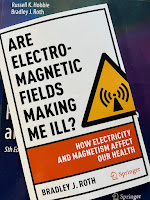 |
| The Story of Civilization, by Will and Ariel Durant. |
Bacon is known for his support of the role of experiment in science. So much of medieval thought was based on religion and mysticism, and an emphasis on science and experiment is refreshing.VII. ROGER BACON: c. 1214–92
The most famous of medieval scientists was born in Somerset about 1214. We know that he lived till 1292, and that in 1267 he called himself an old man. He studied at Oxford under Grosseteste, and caught from the great polymath a fascination for science; already in that circle of Oxford Franciscans the English spirit of empiricism and utilitarianism was taking form. He went to Paris about 1240, but did not find there the stimulation that Oxford had given him…
We must not think of him [Bacon] as a lone originator, a scientific voice crying out in the scholastic wilderness. In every field he was indebted to his predecessors, and his originality was the forceful summation of a long development. Alexander Neckham, Bartholomew the Englishman, Robert Grosseteste, and Adam Marsh had established a scientific tradition at Oxford; Bacon inherited it, and proclaimed it to the world. He acknowledged his indebtedness, and gave his predecessors unmeasured praise. He recognized also his debt—and the debt of Christendom—to Islamic science and philosophy, and through these to the Greeks…
Like Russ Hobbie and I, Bacon appreciated the role of math in science. Durant summarized Bacon’s view as “though science must use experiment as its method, it does not become fully scientific until it can reduce its conclusions to mathematical form.”
Bacon’s work on optics and vision overlaps with topics in IPMB. Durant notes that “one result of these studies in optics [performed by Bacon and others] was the invention of spectacles.” I can hardly think of a better example of physics interacting with physiology than eyeglasses. Durant concludes:
Experimenting with lenses and mirrors, Bacon sought to formulate the laws of refraction, reflection, magnification, and microscopy. Recalling the power of a convex lens to concentrate many rays of the sun at one burning point, and to spread the rays beyond that point to form a magnified image, he wrote:We can so shape transparent bodies [lenses], and arrange them in such a way with respect to our sight and the objects of vision, that the rays will be refracted and bent in any direction we desire; and under any angle we wish we shall see the object near or at a distance. Thus from an incredible distance we might read the smallest letters…These are brilliant passages. Almost every element in their theory can be found before Bacon, and above all in al-Haitham [an Arab scientist also known as Alhazen]; but the material was brought together in a practical and revolutionary vision that in time transformed the world. It was these passages that led Leonard Digges (d. c. 1571) to formulate the theory of which the telescope was invented.
I enjoy reading the Durants’ books. They contain not only the usual political and military history of the world, but also the history of science, art history, music history, comparative religion, linguistics, the history of medicine, philosophy, and literature. While The Story of Civilization may not be the definitive source on any of these topics, it is the best integration of all of them into one work that I am aware of. Had the Durants lived longer, future volumes (which they tentatively titled The Age of Darwin and The Age of Einstein) might have focused even more on the role of science in civilization.
I won’t finish The Story of Civilization anytime soon; I still have seven volumes to go. The series runs to over ten thousand pages, single-spaced, small font (I had to buy more powerful reading glasses for this project). I’ll continue to search for discussions of medical physics and biological physics throughout.
Now, on to The Renaissance.
In Our Time: Season 19/Episode 30, Roger Bacon (April 20, 2017)
https://www.youtube.com/watch?v=i3riF-F7hGY
The Durants—Will & Ariel Durant: The Story of Civilization Documentary.













